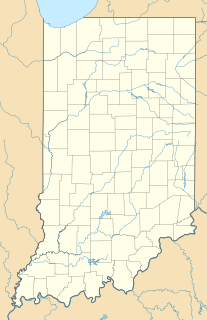Related Research Articles

Gross domestic product (GDP) is a monetary measure of the market value of all the final goods and services produced in a specific time period. GDP (nominal) per capita does not, however, reflect differences in the cost of living and the inflation rates of the countries; therefore using a basis of GDP per capita at purchasing power parity (PPP) is arguably more useful when comparing living standards between nations, while nominal GDP is more useful comparing national economies on the international market.

Per capita income (PCI) or average income measures the average income earned per person in a given area in a specified year. It is calculated by dividing the area's total income by its total population.

Reaganomics, or Reaganism, refers to the economic policies promoted by U.S. President Ronald Reagan during the 1980s. These policies are commonly associated with and characterized as supply-side economics, trickle-down economics, or voodoo economics by political opponents, while Reagan and his political advocates preferred to call it free-market economics.
A variety of measures of national income and output are used in economics to estimate total economic activity in a country or region, including gross domestic product (GDP), gross national product (GNP), net national income (NNI), and adjusted national income. All are specially concerned with counting the total amount of goods and services produced within the economy and by various sectors. The boundary is usually defined by geography or citizenship, and it is also defined as the total income of the nation and also restrict the goods and services that are counted. For instance, some measures count only goods & services that are exchanged for money, excluding bartered goods, while other measures may attempt to include bartered goods by imputing monetary values to them.

Madison County is a county located in the U.S. state of Indiana. As of 2019, the population was 129,569. The county seat is Anderson.

Phillips County is one of the 64 counties in the U.S. state of Colorado. As of the 2010 census, the population was 4,442. The county seat is Holyoke. The county was named in honor of R.O. Phillips, a secretary of the Lincoln Land Company, who organized several towns in Colorado.

The Bureau of Economic Analysis (BEA) of the United States Department of Commerce is a U.S. government agency that provides official macroeconomic and industry statistics, most notably reports about the gross domestic product (GDP) of the United States and its various units—states, cities/towns/townships/villages/counties and metropolitan areas. They also provide information about personal income, corporate profits, and government spending in their National Income and Product Accounts (NIPAs).
The national income and product accounts (NIPA) are part of the national accounts of the United States. They are produced by the Bureau of Economic Analysis of the Department of Commerce. They are one of the main sources of data on general economic activity in the United States.

The Billings Metropolitan Statistical Area is the largest and fastest growing metropolitan area in the U.S. state of Montana. Located in the south central portion of the state, its population was estimated at 180,385 in 2018.

State tax levels indicate both the tax burden and the services a state can afford to provide residents.

Household income is an economic standard that can be applied to one household, or aggregated across a large group such as a county, city, or the whole country. It is commonly used by the United States government and private institutions to describe a household's economic status or to track economic trends in the US.
The per capita personal income of the United States is the income that is received by persons from all sources. It is calculated as the sum of wage and salary disbursements, supplements to wages and salaries, proprietors' income with inventory valuation and capital consumption adjustments, rental income of persons with capital consumption adjustment, personal dividend income, personal interest income, and personal current transfer receipts, less contributions for government social insurance. This measure of income is calculated as the personal income of the residents of a given area divided by the resident population of the area. In computing per capita personal income, the United States Bureau of Economic Analysis (BEA) uses the United States Census Bureau's annual midyear population estimates. In 2018 the average per capita personal income in the United States was US$53,820. The average per worker income was $108,245. The median personal income was not available for 2018, but in 2016 the number was $31,099.

Income in the United States is measured by the United States Department of Commerce either by household or individual.The differences between household and personal income is considerable since 42% of households, the majority of those in the top two quintiles with incomes exceeding $57,658, now have two income earners.

Personal income is an individual's total earnings from wages, investment interest, and other sources. The Bureau of Labor Statistics reported a median personal income of $865 weekly for all full-time workers in 2017. The U.S. Census Bureau lists the annual median personal income at $33,706 in 2018.
Affluence refers to an individual's or household's economical and financial advantage in comparison to others. It may be assessed through either income or wealth.

The Economy of Virginia is well balanced with diverse sources of income. From the Hampton Roads area to Richmond and down to Lee County in the southwest includes military installations, cattle, tobacco and peanut farming in Southside Virginia. Tomatoes recently surpassed soy as the most profitable crop in Virginia. Tobacco, peanuts and hay are also important agricultural products from the commonwealth. Wineries and vineyards in the Northern Neck and along the Blue Ridge Mountains also have become increasingly popular. Northern Virginia hosts software, communications, consulting, defense contracting, diplomats, and considerable components of the professional government sector. As of the 2000 census, Virginia had the highest number of counties and independent cities (15) in the top 100 wealthiest jurisdictions in the United States based upon median income, in addition, Virginia tied with Colorado as having the most counties (10) in the top 100 based on per capita income. Loudoun and Fairfax counties in Northern Virginia have the highest and second highest median household income, respectively, of all counties in the United States as of 2017.

Oil and gas production, tourism, and federal government spending are important drivers of New Mexico's economy. State government has an elaborate system of tax credits and technical assistance to promote job growth and business investment, especially in new technologies.

The economy of Oklahoma is the 29th largest in the United States. Oklahoma's gross state product (GSP) is approximately $197.2 billion as of December 2018.
In Canada, the federal government makes equalization payments to provincial governments to help address fiscal disparities among Canadian provinces based on estimates of provinces' fiscal capacity—their ability to generate tax revenues. A province that does not receive equalization payments is often referred to as a "have province", while one that does is called a "have not province". In 2020-21, five provinces will receive $20.573 billion in equalization payments from the federal government.

Indianapolis (balance) is a statistical entity defined by the United States Census Bureau to represent the portion of the city of Indianapolis, Indiana, that is not within the "included towns". As of the 2010 census the balance had a total population of 820,445.
References
- ↑ "Glossary". United States Department of Commerce, Bureau of Economic Analysis. Retrieved 2008-01-04.
- ↑ Rogers, Carol O. (January–February 2003). "Per Capita Income Confusion for Counties". State of Indiana and Indiana University Partnership for Economic Development. Archived from the original on March 10, 2007. Retrieved 2008-01-04.
| This article about wealth, income, or other related issues is a stub. You can help Wikipedia by expanding it. |